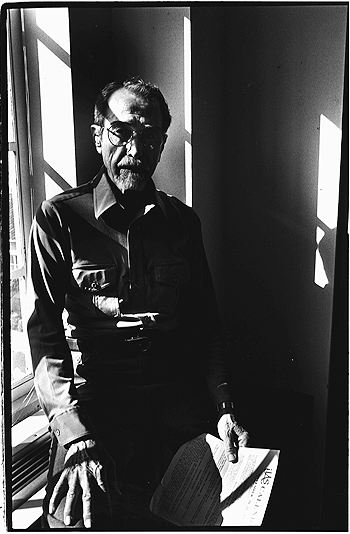
“The Hammon and the Beans” setting is in the border town of Brownsville, Texas, a Mexican community. The community attempts to resist a complete cultural transition but just enough of a transformation that they can be successful. However, in America, it is extremely hard to resist a cultural transformation because the American dream pulls almost everyone in; it is almost impossible to resist. The town has adjusted to their presence at the base by transitioning into the American standard of time and routines. “We told off our days by the routine on the post.” (404).


Americo Paredes
"The Hammon and the Beans"
The Chicano Movement: The Farmworkers Movement
America – the land of the free, the land of possibilities, and opportunities. That is what citizens are told; although, it doesn’t always seem possible. For the Chicano population, their rights were not up to par with what America claimed was possible; so the Chicano’s took a stand and started a movement. The Chicano Movement describes a moment of ethnic empowerment! The Chicano movement was a convergence of a youth movement, anti-war movement, farmworkers movement, and political empowerment. The farmworkers movement specifically focus on Filipino and Mexican field laborers in rural California. Labor leaders raised awareness of the harsh conditions
of farm work in the 1960s. The awareness led to the establishment of the National
Farmworkers Union Organizing Committee in 1972. Due to boycotts, strikes, and
diplomacy encouraged the largest producer of table grapes to only hire workers
represented in the union. The
Brotherhood of Teamsters Union, a rival
rival to the United Farm Workers (UFW),
offered grape producers the option to
sign “sweetheart” contracts that placed
profit over workers’ rights, and also
terrorized UFW labor organizers and
members throughout the decade. A new tactic, a bitter three month strike by the field workers, resulted in many arrests, beatings, shootings, and a few
murders, for violating anti-picketing injunctions. Labor leader Cesar Chaves, never ceased to give up and California passed the Agricultural Labor Relations Act, which guaranteed farm workers’ rights to organize. Although it appeared to be a victory, the agreement implemented more restrictions on the actions of unions. In 1983, conservative governor George Deukmajian began appointing pro-grower and anti-union members to the Ag. Labor Relations Board. Today, despite all the political possibilities and opportunities that have been done and can be done, agricultural workers in California still work under rough conditions for little pay and limited union representation.


Click the button above to read more!
There is an acceptance of the American ways such as time, routine, and soldiers to protect their community, just as there is a resistance by not recognizing the American flag as their own. Paredes utilizes Chonita as a symbol of the Mexican culture in the community.
Segregated from the American soldiers and with limited resources, Chonita sneaks into the fort. “The wondering soldiers whom the bugle called home at night did not wander in our neighborhood, and none of us ever went into Fort Jones.” (405).
One connection is through the cooks scold her for entering the fort, they give her food to take home. Chonita serves as a representative for the Mexican culture in her community but an acceptance of the American culture through food.
She struggles to learn English, but gives routine speeches, “Give me the hammon and the beans!” (406). She is never corrected on the word ham, and always shouts, “hammon.” The other children cheered for her English; which is another demonstration of their acceptance of Americanization. The kids "told her how good it was” but little did Chonita understand, they were actually mocking her, despite their own upbringings of the English language (406). This is also a metaphoric illustration of the destruction of their culture. Chonita almost serves as a bridge between two cultures. The climax occurs when Chonita becomes ill and dies. The narrator is upset by this, because it symbolizes the loss of the town’s aspirations to reach for more while retaining their heritage. It is a symbol of rejection from everything the Americans have to enjoy. The narrator looks at Chonita as the face of their neighborhood. Someone who represents the town because she mirrors all of what they have...which is nothing. "She was already on top of the alley fence when we got there, a scrawny little girl of about nine, her dirty bare feet clinging to the fence almost like hands." (406).
Interestingly enough the death of Chonita is not what initially upsets the narrator, instead it is the sad reality of her no longer being able to follow her dreams. The protagonist “though of Chonita in Heaven, and I saw her in her torn and dirty dress, with a pair of bright wings attached, flying around and round like a butterfly shouting, “Give me the hammon and the beans!" (408).
Through this dark story, Paredes can express his displeasure of the deterioration of Mexican culture because of the American dream and culture epidemic.